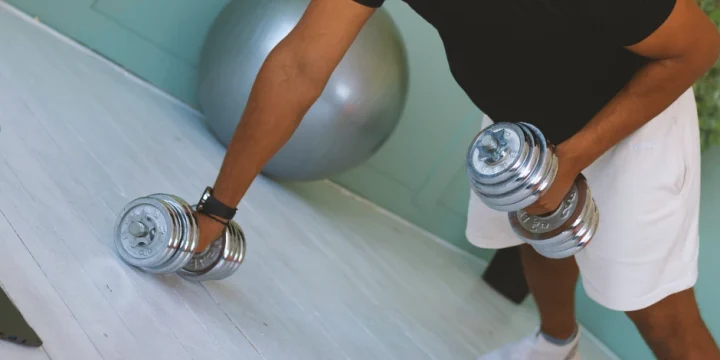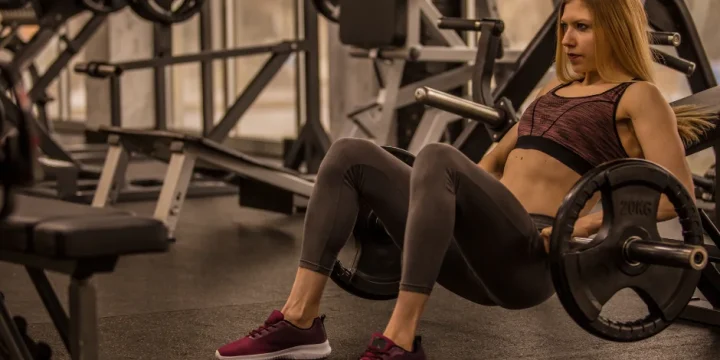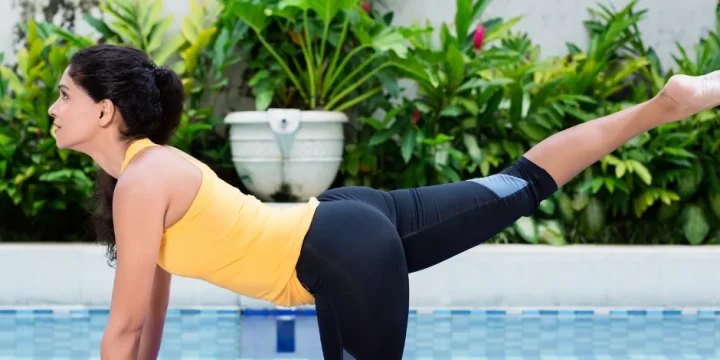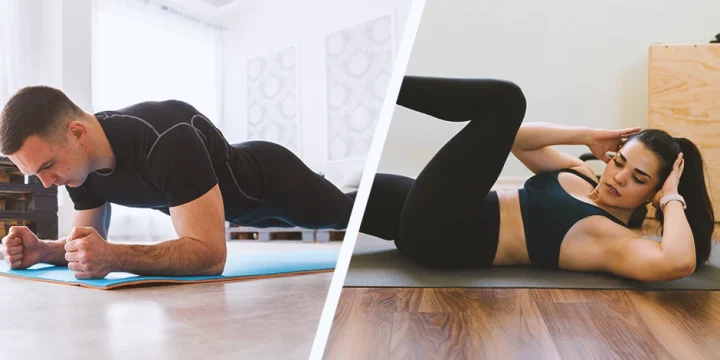The eccentric phase is the most important muscle contraction for developing an injury-free musculoskeletal system.
Based on my observations, some eccentric exercises are better for reducing injuries.
This is why my team of fitness professionals and I tested more than 40 eccentric exercises and singled out only the best.
Check our guide on the 10 best fitness trackers for weightlifting to get the most accurate fitness equipment for measuring the tempo of eccentric exercise.
Read below to learn about the best eccentric exercises, the best training methods, and how to get the most out of eccentric movement training.
Quick Summary
- The seven best eccentric exercises include Reverse Push-Ups, Reverse Pull-Ups, Reverse Lunges or Split Squats, Romanian Deadlifts, Abdominal Rollouts, Precision Depth Jumps, and Eccentric Kbox Squatting.
- These exercises are crucial for injury prevention and rehabilitation, enhancing recovery while building strength.
- The Super Slow Eccentric method, as detailed in the Biology of Sport, involves performing a small number of exercise repetitions with each rep's eccentric phase lasting up to one minute.
- In my opinion, the careful selection of these eccentric exercises offers a targeted and effective approach for enhancing overall fitness and muscular strength.
7 Eccentric Exercises to Add to Your Workout

Eccentric training, also known as eccentric exercise, focuses on eccentric movements that engage the eccentric contraction of muscles, offering benefits such as increased strength and injury prevention when combined with concentric training.
Eccentric exercises play a crucial role in injury prevention and rehabilitation, providing a safer training alternative that enhances recovery while building strength.
My fitness team and I tested all the exercises from the list and ensured all were safe to perform.
Both beginner and advanced lifters can perform all exercises, but amateur and professional athletes will experience the most benefits.
The reason is that eccentric training has the biggest carryover to the world of high-impact sports.
Read below to learn the 7 best eccentric exercises to add to your workout and reduce the risk of injury.
"Most workouts incorporate all three, but eccentric training often gets neglected."
- Autumn Calabrese, NASM & AFPA-Certified Trainer
1. Reverse Push-Ups
In my coaching experience, reverse push-ups have been a game-changer for clients aiming to strengthen their upper body muscles, especially the pectorals, triceps, and anterior deltoids.
Reverse or negative push-ups are excellent for ballistic sports since you teach the anterior muscles of the upper body how to properly decelerate the projectile in your hands.
Push-up follows a horizontal push movement pattern and is one of the most functional upper-body calisthenic exercises.
How to Perform Reverse or Negative Push-Ups:
- Assume a push-up position where your hands are in 30 degrees of internal rotation, 45 degrees of flexion, and 60 degrees of abduction. This is called the functional shoulder position.
- Keep your glutes and abdominal muscles tight, your back flat, and your eyes looking in front and to the floor.
- Start the exercise by lowering your body toward the floor.
- This entails bending the elbows and extending/abducting the shoulders.
- Hold that position for one second when your chest reaches 1 cm above the ground.
- Put your chest on the ground and bring yourself up without doing the rest of the push-up technique.
- Assume a push-up position again and repeat the process.
- The tempo of the eccentric phase should be 3-5 seconds, while the isometric hold is 1 or 2 seconds.
- Repeat for 12 reps and 4 sets.
Related Articles:
2. Reverse Pull-Ups

Reverse or negative pull-ups follow the vertical pull movement pattern and represent basic upper-body pulling exercises for building strength.
The negative or eccentric phase builds initial strength in the latissimus dorsi before proceeding to the concentric training.
Performing eccentric exercises such as negative pull-ups will decrease the likelihood of upper-body injury.
How to Perform Reverse or Negative Pull-Ups:
- Assume a hanging position from the bar where your elbows are fully extended, back flat, and the grip pronated.
- Your feet should be on the ground, but if the bar is too high, place a plyo box below.
- Jump towards the bar and place your chin above it, simulating the last portion of the concentric phase.
- Start the exercise by slowly lowering your body through an eccentric contraction.
- The eccentric portion of the movement entails abducting the shoulders and extending the elbows.
- When you reach the hanging position again. Hop on the box and jump back to the top position to perform the next repetition.
- Repeat for as many reps as you can and 3-4 sets.
3. Reverse Lunges or Split Squats
I've found that reverse lunges or split squats, by engaging the lower body's anterior and posterior chains, offer significant hypertrophy benefits, a fact echoed in my own training routines.
Reverse lunges or split squats follow the lunge and squat movement pattern, activating muscles such as the glutes, hamstrings, and quadriceps.
If you experience patellar issues, you should speak with a doctor or physical therapist before incorporating eccentric training through the lunge movement pattern.
How to Perform Reverse Lunges:
- Pick two dumbbells to perform up to 6 negative reps with each leg.
- Assume a split stance with your right leg forward and left backward.
- Brace your core, look forward, and keep your back flat.
- Start the exercise by slowly lowering your body towards the floor by bending the right knee.
- When your left knee reaches the floor, drop the weights and hold that position for one second.
- Return to the starting position with the concentric portion, but only with your body weight.
- Pick the weights from the floor and start the eccentric portion of the lift again.
- The eccentric phase should last 4 seconds, while isometric or bottom 1 second.
- Repeat for 5 reps with each leg and 3 sets.
4. Romanian Deadlifts
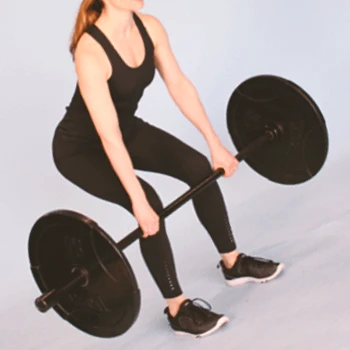
Romanian deadlifts are one of the best eccentric movements for preparing your body for a traditional barbell deadlift.
It follows the bend movement pattern, and bilateral and unilateral Romanian deadlift variations should be incorporated into the single training program.
Romanian deadlift eccentric exercise will include muscles such as the hamstrings, glutes, erector spinae, and latissimus dorsi.
How to Perform Romanian Deadlifts:
- Load the barbell with the appropriate weight to perform 8 repetitions.
- Place it on the floor, and assume a standing position with your shins touching the bar and your back flat.
- Pick the barbell from the floor, so it hangs freely from your hands.
- Start the exercise by slightly bending your knees.
- Bend your torso forward without changing the angle of your knees and lower the barbell to the floor against your body.
- When the barbell reaches below the level of your knees, reverse the motion to return to the starting position.
- Exercise tempo should be 3 seconds eccentric, 1 isometric, and 1 concentric.
- Repeat for 8 reps and 3 sets.
5. Abdominal Rollouts
Abdominal or ab wheel rollouts are one of the toughest core exercises following an anti-extension movement pattern.
You may experience significantly delayed onset muscle soreness after finishing the workout or ab rollouts.
You may consult the physical therapist before implementing advanced eccentric exercises such as ab rollout.
From my personal training sessions, I can attest that abdominal rollouts, while challenging, are incredibly effective for core strengthening, following an anti-extension movement pattern.
How to Perform Abdominal Rollouts:
- Pick a quality ab wheel and assume a kneeling position.
- Inhale, brace your core and keep your back flat during the movement.
- Start the exercise by rolling out in front and stretching your body.
- During the movement, your abdominal muscles should be highly contracted to support your back from lumbar lordosis.
- When you reach the bottom position, where the shoulders are almost fully extended above the body, drop your body to the floor.
- You don’t want to incorporate the concentric version of this exercise before strengthening the whole body through an eccentric version.
- Return to the starting kneeling position and repeat.
- Complete 6 reps for 3 sets.
6. Precision Depth Jumps
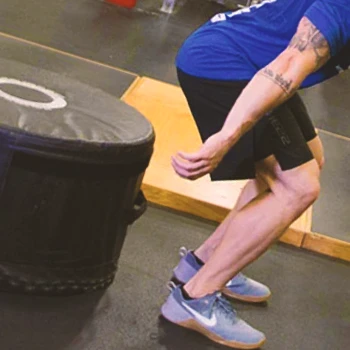
Precision depth jumps are excellent eccentric movements that will force the eccentric portion of the jump to teaching your body how to absorb force.
Depth jumps are widely used in sport-specific scenarios to train your body how to absorb before it teaches you how to produce force.
How to Perform Precision Depth Jumps:
- Set two boxes, one in front of the other.
- Stand on the first box, looking towards the one in front.
- Start the exercise by dropping to the floor and absorbing the impact from the depth jump.
- Quickly react by jumping from the floor onto the box in front.
- Return walking to the first plyo box and repeat.
- Do 4-5 repetitions for 3-4 sets.
7. Eccentric Kbox Squatting
The advantage of the Kbox squatting machine is the ability to put a significant amount of weight due to the lower necessity for stabilizing your body.
Kbox eccentric-focused training will help you develop the necessary strength before doing more explosive squat variations for power and speed.
Using the Kbox squatting machine in my training programs has shown its benefits in allowing significant weight use with less need for body stabilization.
How to Perform Eccentric Kbox Squatting:
- Enter the Kbox machine and set the resistance so you can perform up to 6 to 8 repetitions.
- Start the exercise by lowering your body towards the floor while keeping your back flat.
- Hold that position for one second when your thighs parallel the ground.
- Reverse the motion by extending at your knees and hips to return to the starting position.
- Repeat for 6 reps in 3 sets; the eccentric phase should last 3 seconds.
10 Eccentric Training Methods

Eccentric training has numerous benefits, but only if you use appropriate eccentric reps methods to develop strength and hypertrophy.
In the eccentric phase, muscles lengthen, which causes the muscles to tear. This effect will force your body to adapt and increase muscle mass and strength.
Add eccentric training to your training program using the methods described below.
Understanding how to integrate eccentric training with other workout methodologies can lead to a more holistic approach to fitness, balancing strength, flexibility, and endurance.
In my coaching experience, these 10 eccentric training methods have been instrumental in developing strength and muscle hypertrophy for a diverse range of athletes.
"One of my favorite benefits of eccentrics is that you can get great results with way less load than normal reps. By exaggerating the eccentric tempo, we engage the muscle fibers for more time and can get muscle engagement and fatigue without using our normal load. "
- Avi Silverberg, Head Coach for Team Canada Powerlifting
1. The 3-5 Seconds Eccentric Tempo
The 3-5 seconds eccentric tempo, ideal for beginners, enhances strength and hypertrophy by extending the eccentric lift phase.
Start with a 3-second lowering phase, gradually increasing to 5 seconds over sessions. Warm up thoroughly to prevent muscle soreness post-workout.
2. Eccentric Isometrics
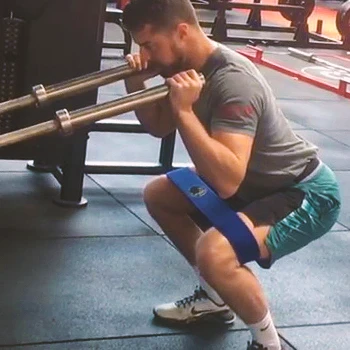
Eccentric isometrics is the technique that will require you to create small pauses during different positions of the eccentric phase [1].
Begin with 3-4 isometric contractions during the eccentric phase of a lift, and gradually increase to 6 contractions over time.
Since eccentric isometrics can strain the central nervous system, ensure longer rest periods between sets.
Applying eccentric isometrics in my sessions, where we pause during the eccentric phase, has significantly improved my clients' muscle control and strength.
3. Super Slow Eccentric
Russian sports scientists initially developed super slow eccentric and immediately incorporated it into the wrestling strength and conditioning program.
It requires you to perform only a few exercise reps for up to 1 minute of the eccentric phase, according to the Biology of Sport [2].
Most of the time, you should do a longer period of eccentrics with your body weight, and when adding external resistance, lower the time.
Super slow eccentrics are excellent for developing local muscle and strength endurance if performed with external resistance.
4. Combination Style Reps
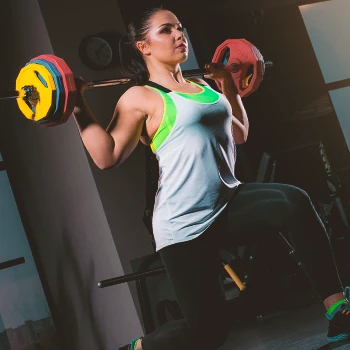
Combination style reps combine challenging body positions for the eccentric phase with easier ones for the concentric phase, optimizing muscle growth and strength.
For instance, in seated rows, use full body momentum in the concentric phase but maintain a rigid body for the eccentric phase, targeting lats, traps, and posterior deltoids more effectively.
Combination style reps have been key for enhanced muscle development in my training programs.
5. Bilateral Concentric – Unilateral Eccentric
Bilateral concentric and unilateral eccentric will require your body to perform the same exercise using less advantageous and harder settings for the eccentric portion of the lifts.
You may incorporate this eccentric training method for the following exercises:
- Lying Leg Curl
- Leg Extension
- Standing Calf Raise Machine
- Rope Press Down
- Scott Curl Machine
- Leg Press
For example, perform the unilateral eccentric leg press and then add the other leg to bring the machine to the starting position.
This will cause more muscle tears in the muscles while still performing the concentric phase of the lift.
6. Forced Reps
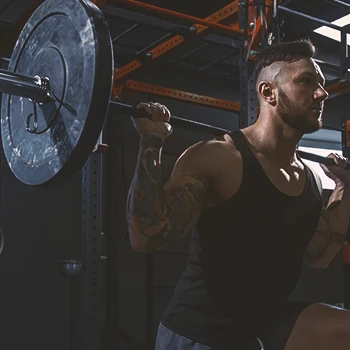
Forced reps are most often used within a strength training program since it requires your body to constantly adapt to new stressors and greater loads [3].
Forced reps involve choosing a weight for up to 6 reps, then having a partner assist with the lift's top portion for up to two additional reps.
This method helps avoid excessive strain and potential injury.
Using forced reps, where clients go beyond their normal rep range with assistance, has led to noticeable strength gains and overcoming plateaus in their workouts.
7. The 12+3 Method
The 12+3 method, created by Dan Duchaine for the Body Contract Workout in 1996, involves completing 12 regular-tempo reps followed by three slower, weight-increased eccentric reps.
A training partner is required to assist with weight adjustment and movement control, differentiating it from forced reps.
8. The 4+2 Method
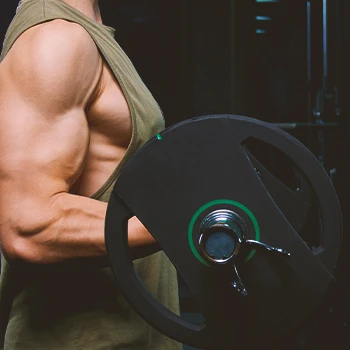
This method is similar to the previous one, favored by the strength coach Charles Poliquin.
This method involves heavier loads and fewer reps, requiring a training partner to add weights and assist in the concentric phase, ensuring the weight is managed effectively through the motion.
Incorporating the 4+2 method, which I've used with heavier loads for fewer reps, has proven effective in increasing strength, especially in advanced training sessions.
9. Overloaded Eccentric/Explosive Concentric
This method can only be executed using eccentric hooks, a training accessory for overload training, according to the Journal of Functional Morphology and Kinesiology [4].
Attach weights to releasers on the barbell's sleeves, set to release at the movement's bottom.
This setup allows for an explosive concentric phase, effectively enhancing strength development.
10. Negative Singles

In the negative single method, perform a single rep focused on the eccentric phase using a weight above your 1RM.
A partner assists in resetting the weight after a 3-10 second eccentric phase. This technique effectively builds absolute strength.
From my coaching practice, negative singles, involving single reps focused solely on the eccentric phase, have been a powerful tool for developing maximum strength in athletes.
FAQs
What Are Examples of Eccentric Exercises?
Examples of eccentric exercises include reverse push-ups, lunges, Romanian deadlifts, abdominal rollouts, precision depth jumps, and Kbox squatting. However, these aren't solely eccentric exercises but only the eccentric phase of the exercises.
What Are Eccentric Exercises Good For?
The eccentric exercises are good for teaching your body how to absorb force and reduce the risk of injury. However, they also efficiently induce the biggest muscle-building or hypertrophy effects.
Does Eccentric Build More Muscle?
Yes, eccentric build more muscles. The reason is that the eccentric phase causes more muscle tears since it includes lengthening the muscles.
References:
- https://pubmed.ncbi.nlm.nih.gov/31361732/
- https://www.ncbi.nlm.nih.gov/pmc/articles/PMC8919893/
- www.oxfordreference.com/display/10.1093/oi/authority.20110803095827866;jsessionid
- https://www.ncbi.nlm.nih.gov/pmc/articles/PMC7739370/
About The Author
You May Also Like
